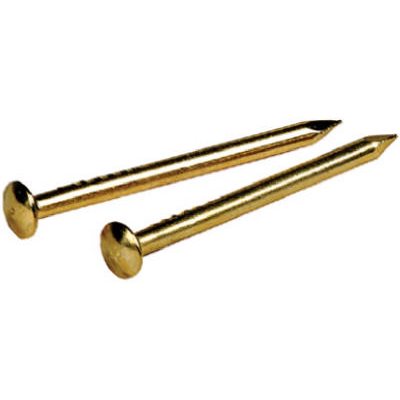Results 1 to 10 of 10
 13Likes
13Likes
Thread: Pin size
-
12-24-2017, 02:45 AM #1Junior Member

- Join Date
- Dec 2017
- Location
- Brooks, GA 30205
- Posts
- 7
Thanked: 0 Pin size
Pin size
Does the pin size for the scales vary by make and model? Where can I find pin stock?
Thanks in advance!
-
12-24-2017, 03:03 AM #2

As far as I know, Pin stock is 1/16" standard. You can buy it on eBay with washers. We have a member that sell them on ebay too. I find it locally at Ace Hardware too.
It's just Sharpening, right?
Jerry...
-
12-24-2017, 03:28 AM #3

Hardware store, hobby lobby, mickaels all have 1/16 brass rod
If you don't care where you are, you are not lost.
-
12-24-2017, 03:36 AM #4

You can also use nickel silver for pin stock, but I would stay away from steel because it is a pain to peen.
-
12-24-2017, 03:53 AM #5

If you want. the online pins and washers are the best as they are sets. Then, brass brazing rod from a welder you know or a shop near you.
I have used escutcheon pins a lot. the head is a nice size and a bit of file work makes it a cheap choice. Washers? hobby shop will do. Some craft stores also have them.
1-Inch x 16 Solid Brass Escutcheon Pins, 2 oz.
Just some possibilities
~RichardBe yourself; everyone else is already taken.
- Oscar Wilde
-
12-24-2017, 04:05 AM #6

The vintage and the new pin diameters are slightly different.
Here's a link from here at SRP that will provide you with tons of information:
http://straightrazorpalace.com/works...wers-here.html
I can't recall if this little bit but very important bit of info is found there but use a 5/64ths in drill bit when you go to drill the holes in new OR vintage scales. Otherwise you run the risk of breaking the scales.
Welcome to an older but better way of shaving! Our house is as Neil left it- an Aladdins cave of 'stuff'.
Our house is as Neil left it- an Aladdins cave of 'stuff'.
Kim X
-
-
12-24-2017, 04:18 AM #7

I agree! 5/64th bit to drill the scales has helped me out a few times not when things would line up exactly right. A little play goes a long ways.
It's just Sharpening, right?
Jerry...
-
12-24-2017, 05:06 AM #8

A year or two ago the supplier that a certain well known restorer was out of stock in the 1/16" nickle silver rod and the restorer was very low on his stash. I was out and I went looking and that rod was as scarce as hens teeth. But I found some and let the restorer know about it. He asked that I send him a single 12" long rod so he could measure it before he bought any (he buys in 20 ft quantities) so I did and it passed his testing.
So again the 5/64ths drill bit is good insurance as the rod itself can vary in diameter. Even though the restorer uses that size drill bit, he's a fussy old bastard and that's what I like about him. Our house is as Neil left it- an Aladdins cave of 'stuff'.
Our house is as Neil left it- an Aladdins cave of 'stuff'.
Kim X
-
12-24-2017, 08:13 AM #9

Hobby stores sell 1/16 brass rod but the nickel silver (actually a Zn Cu Ni alloy) rod is harder to come by - and harder to work as well. The old Sheffields were pinned with smaller diameter material but the punched holes in the razor shanks were huge so the 1/16" rod is just fine.
-
12-24-2017, 10:45 AM #10

I agree about drilling slightly bigger. It gives a little clearance inside of the scales and helps prevent splitting. I usually use a #51(.067) or a #50(.070) drill bit. Most of the 1/16 brass rod I find is slightly bigger than 1/16.


 LinkBack URL
LinkBack URL About LinkBacks
About LinkBacks






 Reply With Quote
Reply With Quote






